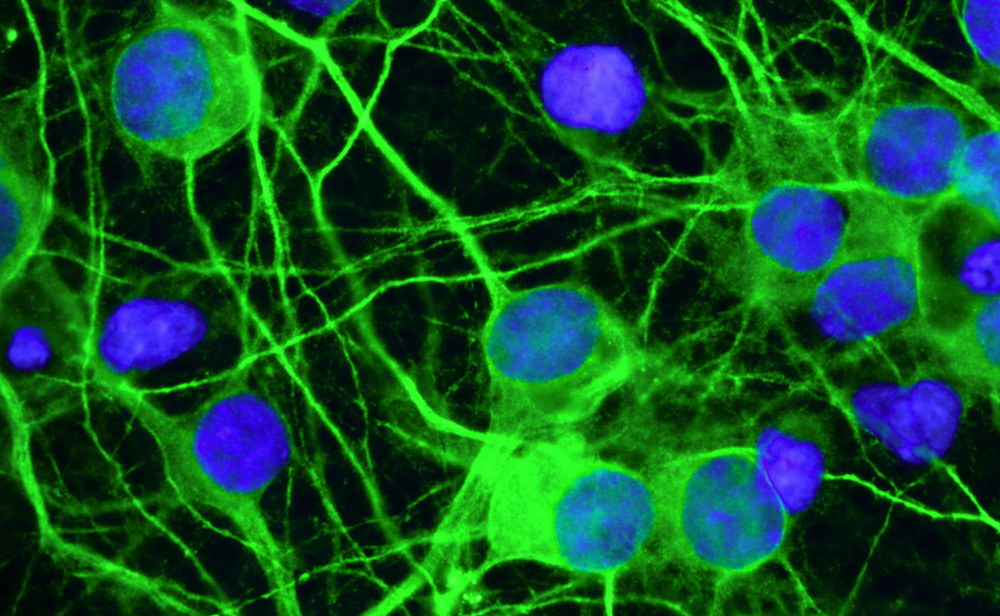LOCKING UP ROGUE RNAs
At the heart of our approach, we’re developing novel therapies that prevent rogue RNAs from escaping into the cytoplasm where they can cause harm.
Hexanucleotide repeat expansions, a type of genetic mutation, in the C9ORF72 gene are the most common genetic cause of ALS and FTD. The faulty gene is transcribed to repeating RNAs that are transported from the cell’s nucleus into the cytoplasm where they are translated into toxic dipeptide repeat proteins (DPRs).
Seminal research by our scientific founders showed that depletion of a nuclear transport accessory protein in patient-derived neurons and animal models decreases the amount of rogue repeat RNAs entering the cytoplasm, which has the knock-on benefit of reducing the production of neurotoxic dipeptide repeat proteins. These studies revealed a novel, neuroprotective therapeutic target that can be exploited and potentially become a first-in-class treatment for ALS and FTD.
Hexanucleotide repeat expansions, a type of genetic mutation, in the C9ORF72 gene are the most common genetic cause of ALS and FTD. The faulty gene is transcribed to repeating RNAs that are transported from the cell’s nucleus into the cytoplasm where they are translated into toxic dipeptide repeat proteins (DPRs).
Seminal research by our scientific founders showed that depletion of a nuclear transport accessory protein in patient-derived neurons and animal models decreases the amount of rogue repeat RNAs entering the cytoplasm, which has the knock-on benefit of reducing the production of neurotoxic dipeptide repeat proteins. These studies revealed a novel, neuroprotective therapeutic target that can be exploited and potentially become a first-in-class treatment for ALS and FTD.
MECHANISM OF ACTION
We are developing first-in-class RNA-targeting medicines that reduce nuclear transport of rogue RNAs and production of neurotoxic protein species.


